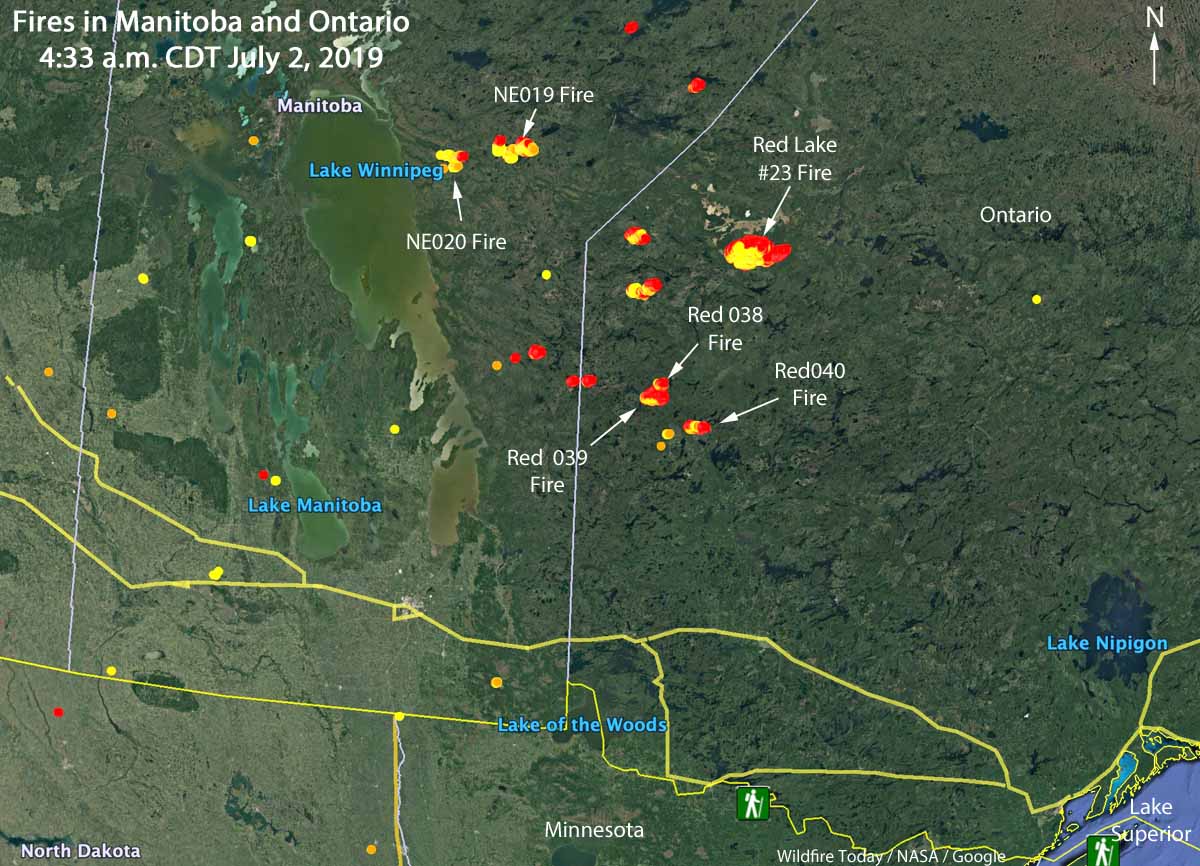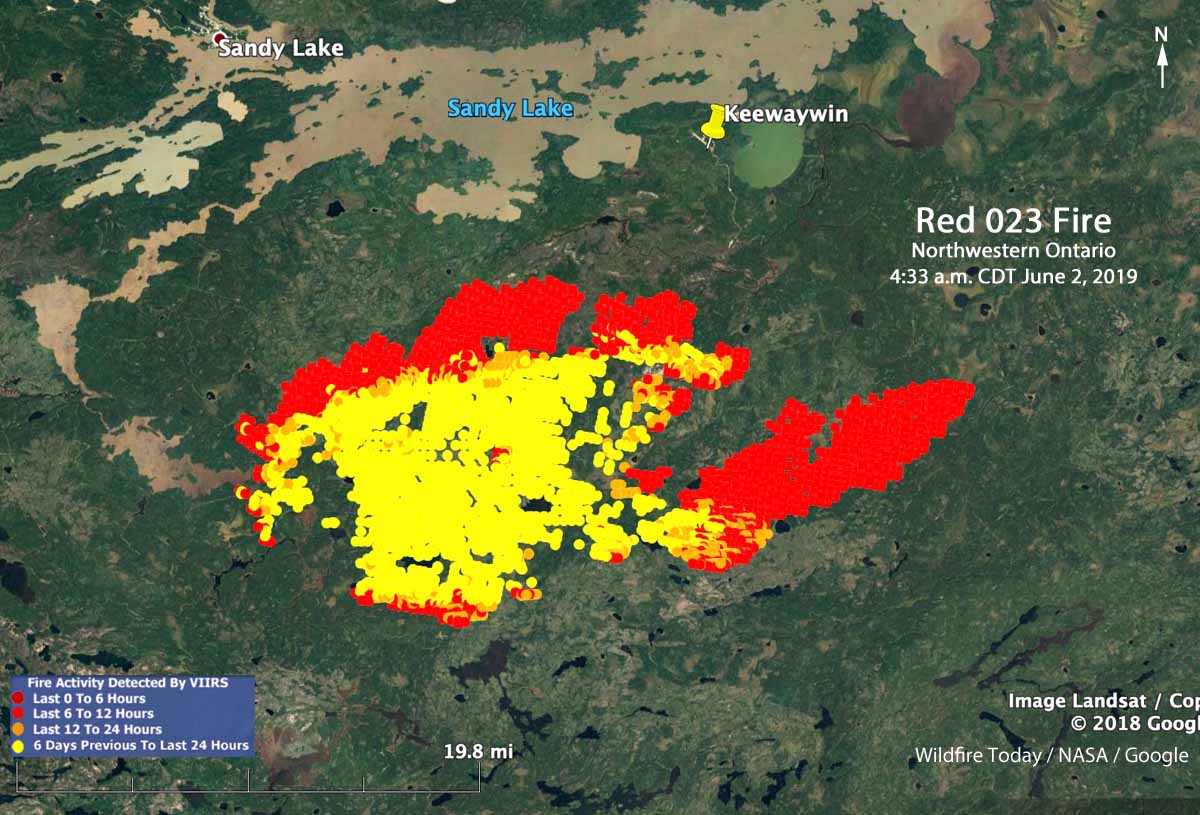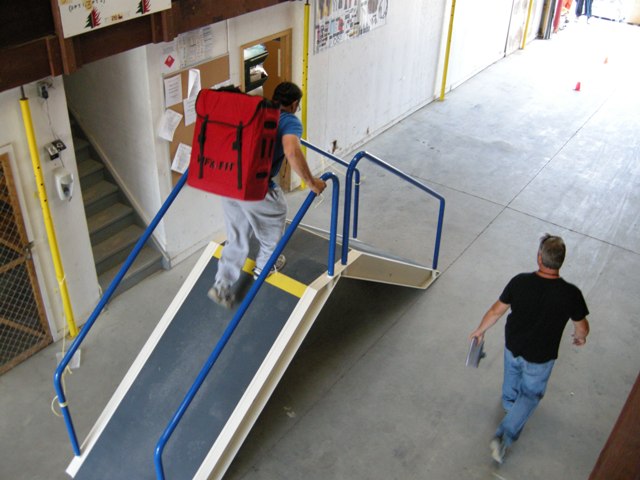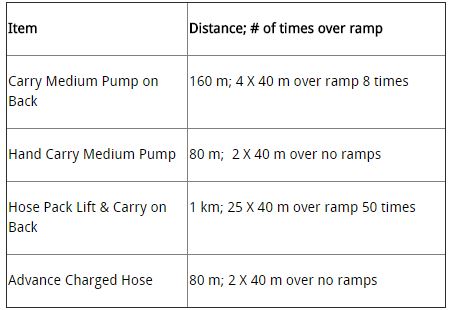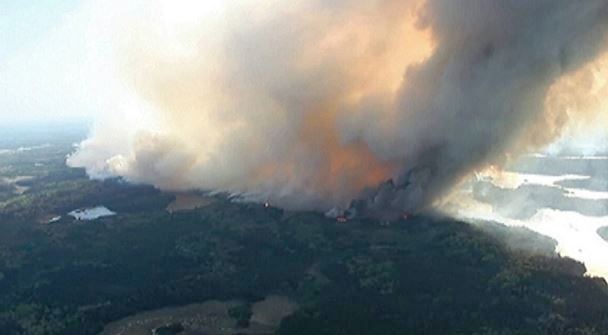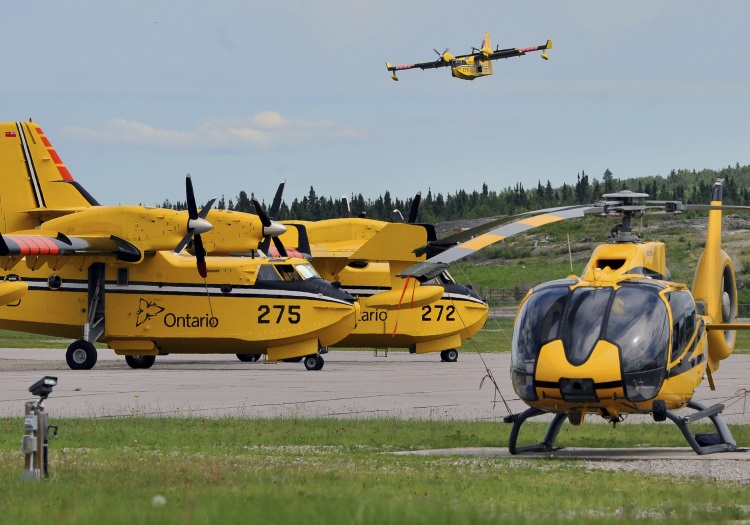
(UPDATED at 2:56 p.m. CDT July 8, 2019)
The Chief and Council in Pikangikum, Ontario have ordered a full evacuation for the community due to a wildfire that has spread to within three kilometers of the town. All residents must register at the Pikangikum High School starting Tuesday at 7:00 am. .
The EOC is organizing flights, boats and a variety of evacuation methods. Residents will be evacuated to Red Lake initially and then marshalled to communities from there. Self-evacuees must also register in order to be put on the manifest and be supported.
Until Monday afternoon, evacuation was only recommended for elders, pregnant women, and anyone with respiratory issues.
The full evacuation will include thousands of residents.
(Originally published at 9:53 a.m. CDT July 8, 2019)
For the second time in just over a month a village in Northwest Ontario is being evacuated due to smoke from wildfires.
Pikangikum First Nation, with a population of several thousand, is in a remote area 87 k (54 miles) north of Red Lake with no road access except in the winter. Around the first of June residents vulnerable to smoke, including elders, pregnant women, and anyone with respiratory issues were flown out. The military landed a C-130 on the nearby 3,700-foot dirt runway north of the village to evacuate about 300 people.
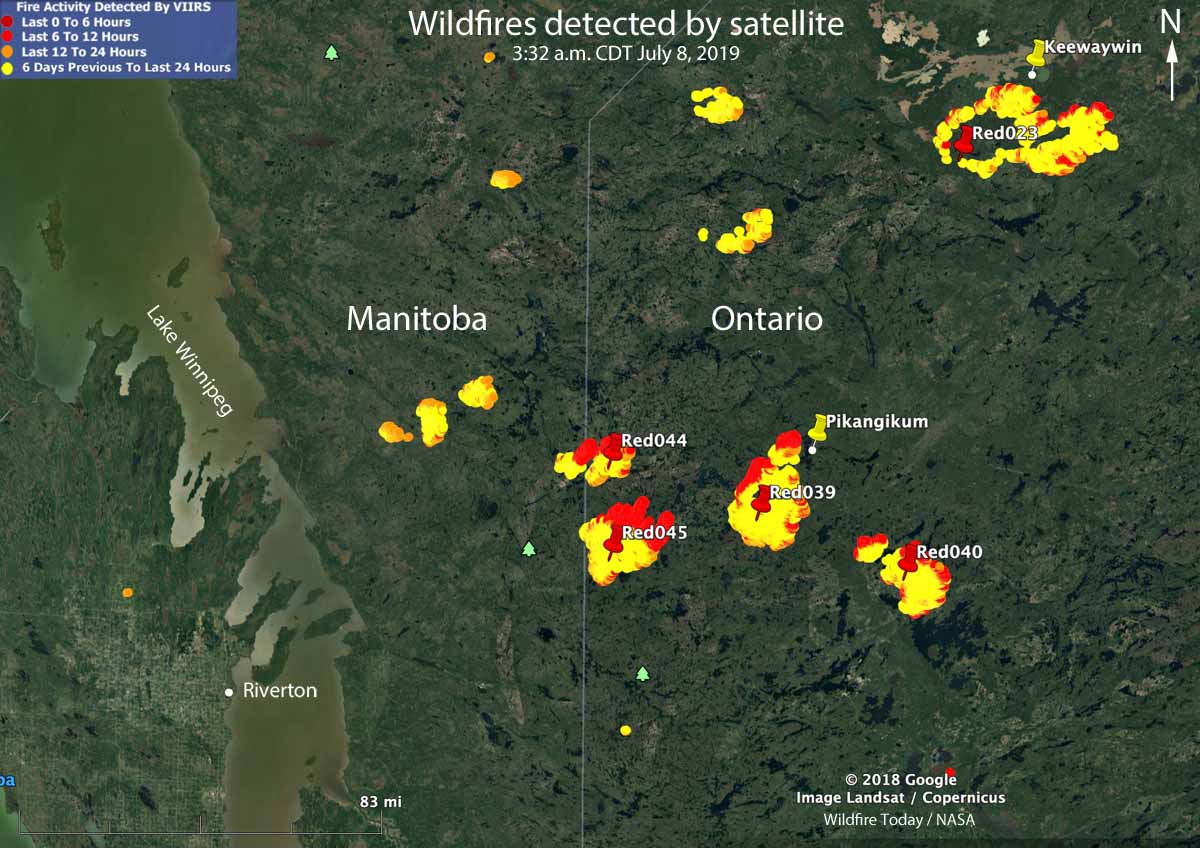
With some of the residents having been back home for only a few weeks another fire, just 5 kilometers (3 miles) west of the community is forcing a repeat of the same scenario. For now, a lake separates the villagers from the fire, but not from the smoke. Officials are discouraging residents from self-evacuating by boat, saying it is not safe to do so.
The fire threatening Pikangikum is named Red Lake 39 and so far has burned over 40,000 hectares (99,000 acres). The fire is being managed by an incident management team as part of a larger cluster of fires. The team is looking for aerial ignition opportunities to tie the fire into natural boundaries. Sprinklers are being set up to protect structures.
That fire and several others in the area were very active Sunday and Sunday night, all of them running about 11 kilometers (7 miles) to the northeast (the red areas on the map above).
The Red Lake 23 Fire south of the community of Keewaywin has burned 71,993 (178,000 acres).
The Red Lake 40 Fire near Nungesser Lake has been mapped at 23,737 hectares (59,000 acres). It is 37 k (23 miles) northeast of Red Lake.

